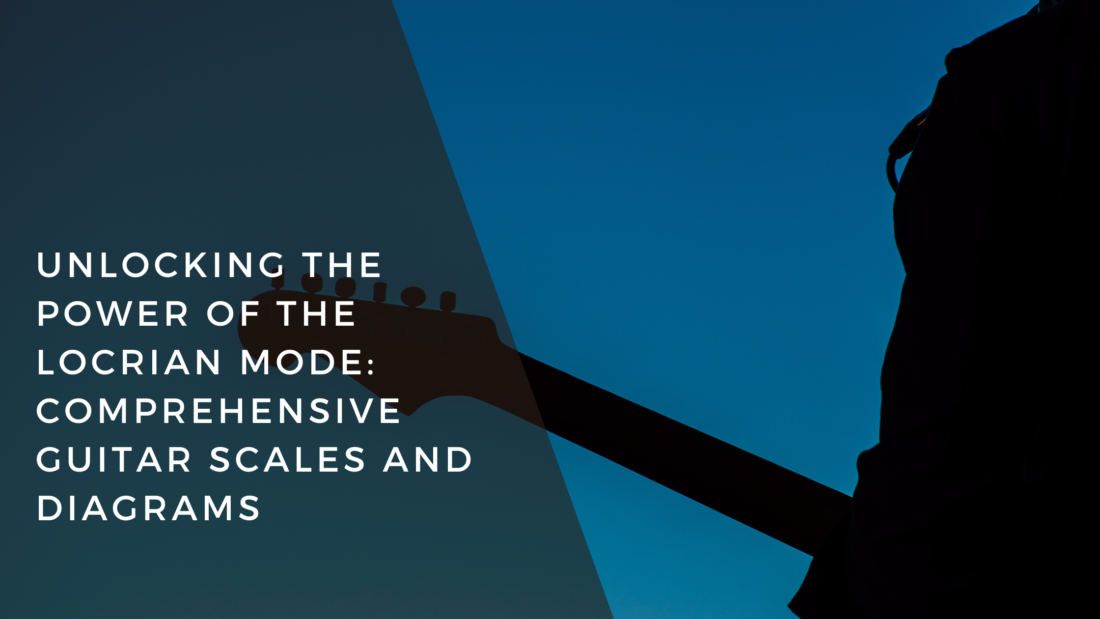Unlocking the Power of the Locrian Mode: Comprehensive Guitar Scales and Diagrams
The Locrian mode is one of the seven common diatonic modes, and is often considered to be the darkest. The Locrian mode derives its name from the people who inhabited the ancient Greek regions of Locris, where it was believed to have originated. Historically, it was used less frequently than other diatonic modes because of its perceived dissonance and instability.
Despite its dissonance and instability, the Locrian mode has been used in various genres such as jazz, rock, and metal, as well as in film and video game soundtracks to create tension and suspense. The mode is defined by a flattened second and a flattened fifth in the natural minor scale, and is denoted by the intervals Root, Minor second, Minor third, Perfect fourth, Diminished fifth, Minor sixth, and Minor seventh. In this article, you can find more information about Locrian mode intervals, the Locrian scale in all “keys,” and songs that use the Locrian mode. There are no hard rules for using the Locrian mode in your own music, but it is often used to create a dark, unstable sound due to its diminished root chord and tritone.
Structure of Locrian mode
The Locrian mode is a musical mode that includes all the notes of natural minor, but with two adjustments: a lowered second note (♭ˆ2) and a lowered fifth note (♭ˆ5). For instance, if we began on B, the Locrian scale would be B, C, D, E, F, G, A, and B.
Example: B Locrian scale

Comparison between the Locrian and Super Locrian modes
When examining the Locrian scale, you may encounter the Super Locrian scale, which is similar to Locrian but with a flattened fourth note. This scale is also known as the Altered Scale because it changes all the notes of a major scale.
Example: B Super Locrian scale

Locrian mode intervals
As you can see from the previous example, the Locrian mode is made up of the following intervals:
- Root
- Minor second
- Minor third
- Perfect fourth
- Diminished fifth
- Minor sixth
- Minor seventh
Using this formula, here are the notes for a C Locrian scale:
- C
- D♭
- E♭
- F
- G♭
- A♭
- B♭
- C
12 keys of Locrian modes
Although it is more beneficial to become acquainted with the sequence of intervals rather than memorizing each scale individually, below is a table which identifies the Locrian scale linked with each root note to provide a convenient reference.
| Root | Notes in the Locrian mode |
|---|---|
| C | C – D♭ – E♭ – F – G♭ – A♭ – B♭ – C |
| C♯ | C♯ – D – E – F♯ – G – A – B – C♯ |
| D♭ | D♭ – E♭♭ – F♭ – G♭ – A♭♭ – B♭♭ – C♭ – D♭ |
| D | D – E♭ – F – G – A♭ – B♭ – C – D |
| D♯ | D♯ – E – F♯ – G♯ – A – B – C♯ – D♯ |
| E♭ | E♭ – F♭ – G♭ – A♭ – B♭♭ – C♭ – D♭ – E♭ |
| E | E – F – G – A – B♭ – C – D – E |
| F | F – G♭ – A♭ – B♭ – C♭ – D♭ – E♭ – F |
| F♯ | F♯ – G – A – B – C – D – E – F♯ |
| G♭ | G♭ – A♭♭ – B♭♭ – C♭ – D♭♭ – E♭♭ – F♭ – G♭ |
| G | G – A♭ – B♭ – C – D♭ – E♭ – F – G |
| G♯ | G♯ – A – B – C♯ – D – E – F♯ – G♯ |
| A♭ | A♭ – B♭♭ – C♭ – D♭ – E♭♭ – F♭ – G♭ – A♭ |
| A | A – B♭ – C – D – E♭ – F – G – A |
| A♯ | A♯ – B – C♯ – D♯ – E – F♯ – G♯ – A♯ |
| B♭ | B♭ – C♭ – D♭ – E♭ – F♭ – G♭ – A♭ – B♭ |
| B | B – C – D – E – F – G – A – B |
It may sound a bit “off” because these modes do not have the same functional behaviors as traditional major and minor keys, which is required by the term’s strictest definition. Also, please note that some of these modes are enharmonically equivalent. For example, the modes built off of A♯ and B♭ share all of the same pitches but are expressed differently in writing.



